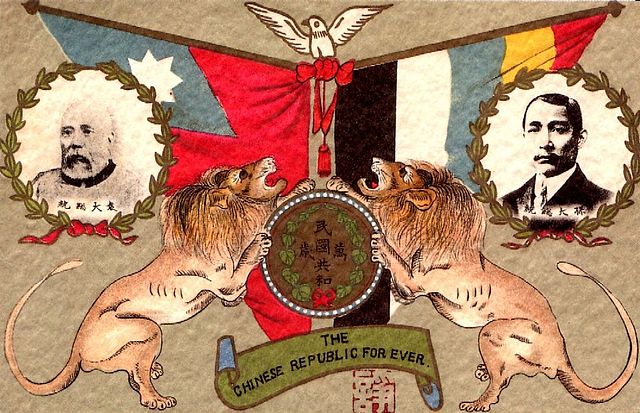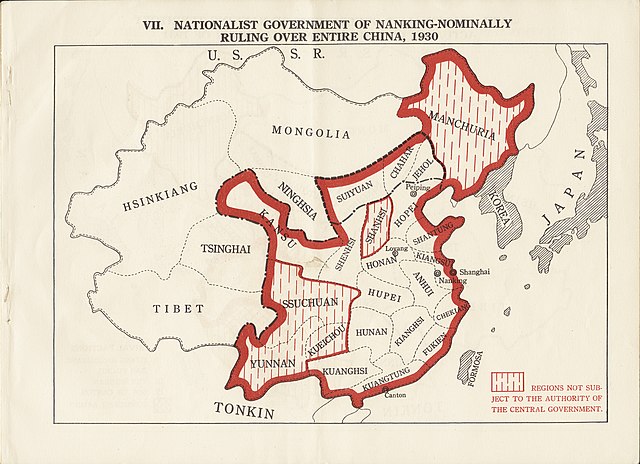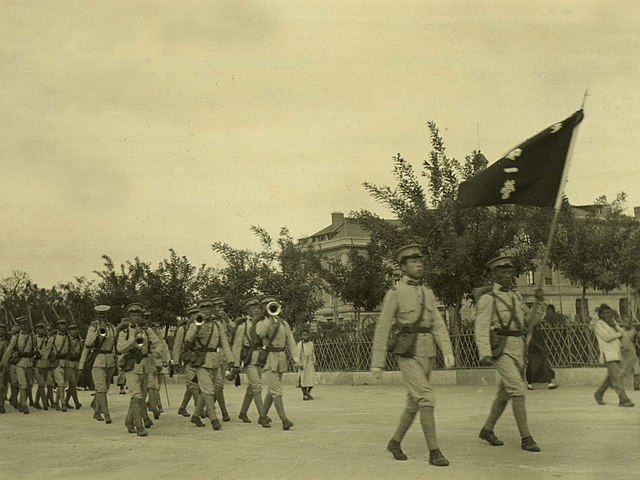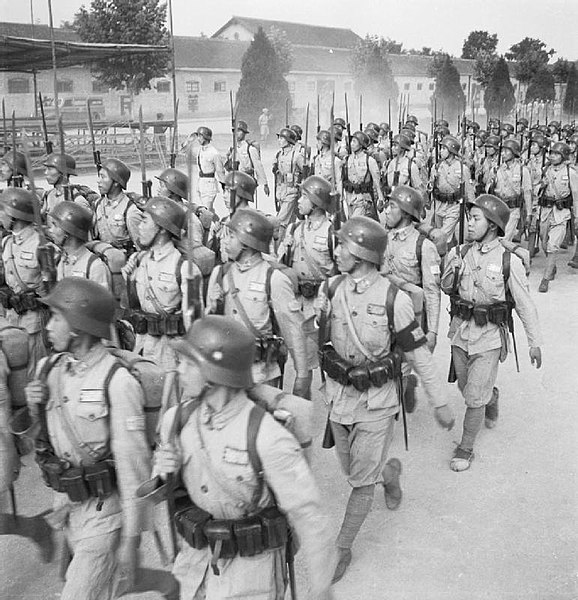The May Fourth Movement was a Chinese cultural and anti-imperialist political movement which grew out of student protests in Beijing on May 4, 1919. Students gathered in front of Tiananmen to protest the Chinese government's weak response to the Treaty of Versailles decision to allow Japan to retain territories in Shandong that had been surrendered by Germany after the Siege of Tsingtao in 1914. The demonstrations sparked nation-wide protests and spurred an upsurge in Chinese nationalism, a shift towards political mobilization away from cultural activities, and a move towards a populist base, away from traditional intellectual and political elites.
Around 3,000 students from 13 universities in Beijing gathered in Tiananmen Square
Female students participate in demonstration as part of the May Fourth Movement in 1919
Tsinghua University students burn Japanese goods.
Students of Beijing Normal University after being detained by government during the May Fourth Movement.
Republic of China (1912–1949)
The Republic of China (ROC), or simply China, was a sovereign state based on mainland China from 1912 to 1949 prior to the government's relocation to Taiwan, where it continues to be based today. The ROC was established on 1 January 1912 during the Xinhai Revolution against the Qing dynasty, ending the imperial history of China. The Republican government was ruled by the Kuomintang (KMT) as a one-party state based in Nanjing from 1927, until its flight to Taipei on 7 December 1949 following the KMT's de facto defeat by the Chinese Communist Party (CCP) in the Chinese Civil War. The CCP proclaimed the People's Republic of China on 1 October 1949, while the ROC retains control over the "Free Area", with the political status of Taiwan remaining in dispute to this day.
Yuan Shikai (left) and Sun Yat-sen (right) with flags representing the early republic
Nationalist government of Nanjing, which nominally ruled over all of China during 1930s
Beiyang Army troops in the 1920s.
NRA troops in 1944.








